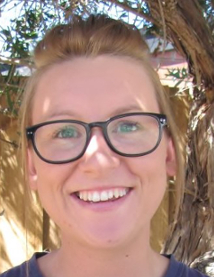PhD students

Joji Abraham
Email: Joji.abraham[AT]outlook.com
Title: The influence of controlled burning on the remobilising arsenic and selected metals from the soils in historic mining districts of Central Victoria, Australia.
Summary: We live in a mining affected landscape where controlled burns and intense bush fires are more and more common. The mobilization of significant quantities of arsenic, and other toxic metals during and after fire regimes that have the potential to affect ecological and human health adversely, warrants investigation.

Samantha Barron
Email: Samanthabarron88[AT]hotmail.com
Title: Invasion by a native Australian shrub Acacia longifolia ssp. longifolia in southeastern Australia.
Summary: Acacia longifolia ssp. longifolia is an invasive plant within the Grampians National Park. The shrub is a transformer species, which threatens the diverse, and in some cases endemic, flora of fauna of the area. This overall aim of this project is to determine the environmental factors and plant traits which may enhance the invasiveness of the species, as well as predict the future distribution and abundance of Acacia longifolia ssp. longifolia, and thus focus and create achievable and efficient management strategies.

Daniel Clements
Email: daniel.clements[AT]ecodev.vic.gov.au
Title: Optimising the management of invasive aquatic plants targeted for extirpation from catchments and waterways; utilising alligator weed (Alternanthera philoxeroides) as an indicator species.
Summary: This research project aims to develop effective management strategies for one of the world's most invasive aquatic weed species, alligator weed (Alternanthera philoxeroides) in an early stage of invasion, to achieve extirpation from catchments and waterways. Developing methods to manage viable fragment production post herbicide application and improving the effectiveness of detection in early stages of invasion, will result in an increased likelihood of extirpating invasive aquatic weeds that pose a biosecurity risk and reduce the impacts on agricultural productivity, social amenity and biodiversity values.

Ako Hussein Mahmood
Email: akohusseinmahmood[AT]students.federation.edu.au
Title: Investigations into the ecology and management of the invasive plant Galenia pubescens within the native temperate grasslands of Victoria, Australia.
Summary: Galenia pubescens (carpet weed or coastal galenia) belongs to the family Aizoaceae and is also commonly known as blanket or carpet weed. This species is a woody prostrate perennial species native to South Africa, however it has been introduced to and become well established in other localities such as California, central Chile and various states in Australia. It was introduced as a fire retardant in the USA and for its erosion control properties in Australia. This study will investigate aspects of the ecology and management of G. pubescens in western regional Victoria. The project aims to provide management solutions which enhance the competitiveness of native grasslands species.

Rachael Martin
Email: r.martin[AT]federation.edu.au
Title: Investigating the physical distribution of arsenic in mining wastes as a function of particle size and the implications for human exposure.
Summary: One of the factors governing the fractionation of arsenic in mining wastes is particle size. The objective of this research is to systematically examine the distribution of arsenic, and other potentially toxic elements, in particles that are considered relevant to mobility (i.e. dust particles) and human exposure (i.e. ingestible and inhalable particles). The analysis presented in this study may be used for guiding strategies for future site management and remediation in settings with similar characteristics.

Shakir Bahaddin Shakir
Email: shakirbahaddin[AT]students.federation.edu.au
Title: Investigating factors affecting restoration of native grassland in ex-cropland.
Summary: The ecological barriers to restoring ex-arable land to native grassland include soils that contain high levels of nitrogen and phosphorus, and an extensive seed bank of exotic weeds. These factors give exotic species a competitive advantage over native species, which can prevent the reintroduction of native species. In order to address this situation, we have established a replicated field experiment in former crop land near Werribee, Victoria, to test some novel methods for grassland restoration. This work includes the determination of the individual effects of high N and P levels, and the role of the exotic soil stored seed bank as barriers to restoration. Results will improve our understanding of these barriers to grassland restoration, and provide a stronger theoretical framework for further research.

Sandra Weller
Email: wellersandra0[AT]gmail.com
Title: Detection and prevention of the dispersal of the seeds of Chilean needle grass (Nassella neesiana Trin. & Rupr (Barkworth)) in hay bales.
Summary: It has been established that hay bales may be a significant vector for the dispersal of weeds. Besides the everyday requirements of the livestock industry, bales sent to graziers affected by drought, floods, and fire may also risk the dispersal of weeds. My work has investigated the application of non-destructive core sampling of bales to detect seeds of N. neesiana. This work will enable the use of a rapid, inexpensive method to enforce biosecurity on baled fodder. I have also investigated the use of silage fodder preservation to reduce infestations of this weed in grazed pastures.